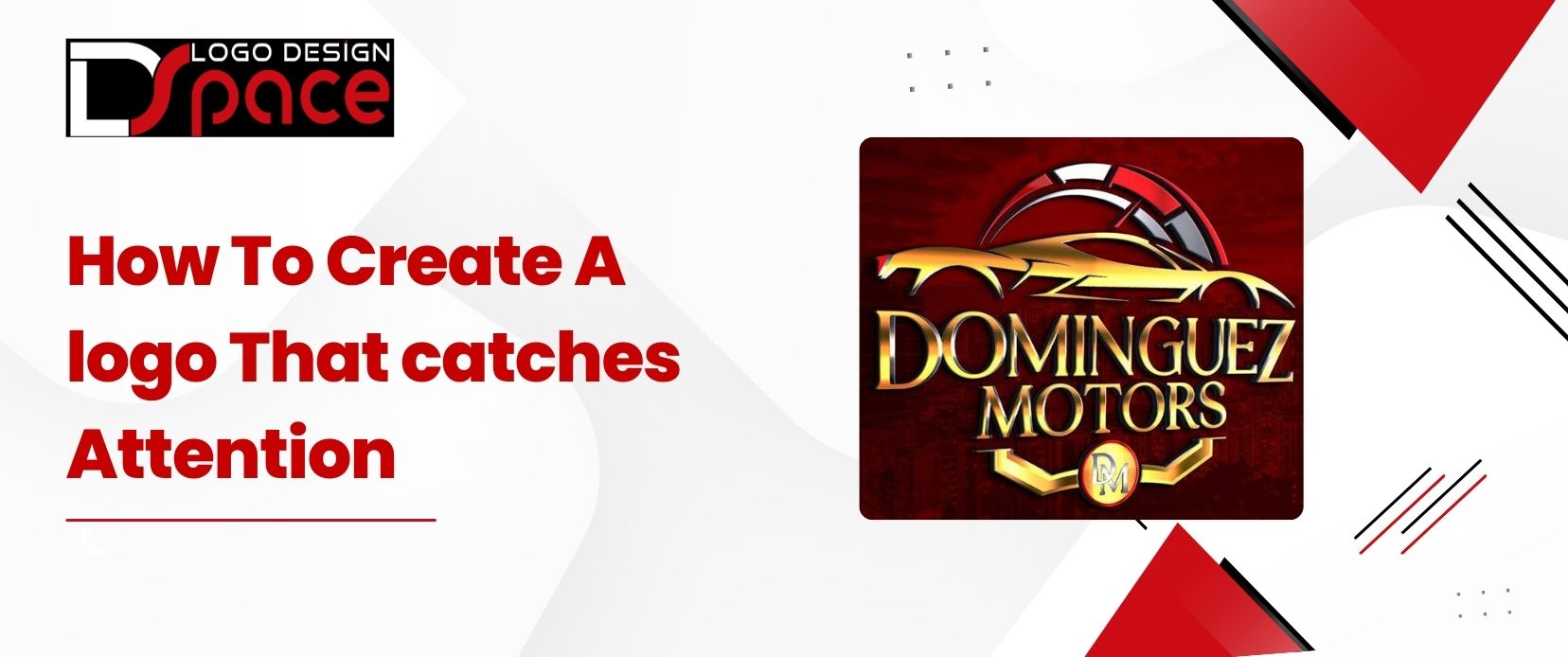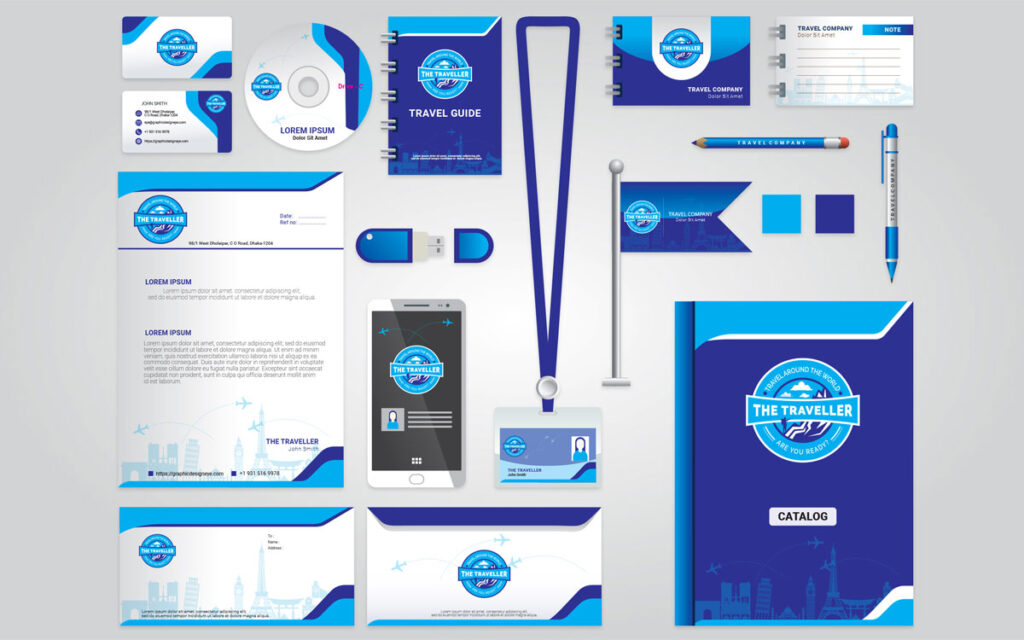- Our Services
Brand Identity
Website Design
Print Media
Brand Identity
Website Design
Print Media
Packaging Design
- Pricing
Brand Identity
Website Design
Print Media
Brand Identity
Website Design
Print Media
Packaging Design
- Portfolio
- About Us
- Our Team
- Our Reviews
- Blogs

How to Create a Logo That Catches Attention
A logo is more than just a design; it is the face of your business and a vital element in your branding strategy. In a world filled with visual stimuli, a well-crafted logo can help your brand stand out, create lasting impressions, and establish a strong connection with your audience. This guide will explore practical steps to create a logo that captures attention and resonates with your target market.
The Significance of an Effective Logo
Your logo serves as the graphical evidence for your brand . Here are some reasons why having an impactful logo is crucial:
Creates First Impressions: As you all know the phrase “First impression is the last interaction ” ,this phrase is also relates with logo design because it serves as a first impression for potential customer . A captivating logo can draw attention and spark interest, encouraging further exploration of your products or services.
Builds Brand Recognition: A distinctive logo enhances brand recall, making it easier for customers to recognize and remember your business. Consistency in using your logo across all platforms reinforces this recognition.
Conveys Professionalism: A thoughtfully designed logo communicates a sense of professionalism and credibility, fostering trust with your audience.
Steps to Design a Compelling Logo
1. Clarify Your Brand Identity

Before embarking on the design process, it’s essential to define what your brand stands for. Consider the following questions:
What are your brand values and mission?
Who is your target audience?
What emotions do you want your logo to evoke?Understanding your brand’s identity will provide direction and ensure your logo reflects your business’s core message.
2. Gather Inspiration

Look for inspiration by researching successful logos within your industry. Analyze their design elements to identify what works well and what doesn’t. Consider:
Color Choices: Colors can evoke specific emotions. For instance, green often signifies growth and health, while blue conveys trust and reliability.
Typography: The font you choose should be readable and consistent with the personality of your brand. Try a variety of fonts to get a pleasing unity.
Visual Elements: Explore how different symbols or icons are used to represent brands. This can help you conceptualize unique elements for your own logo.
Online platforms like Pinterest or Dribbble are excellent resources for gathering design ideas.
3. Sketch Your Concepts

Once you have a clear understanding of your brand and design inspirations, begin sketching your logo ideas. Don’t be afraid to experiment with different shapes, symbols, and layouts. Creating multiple drafts allows you to explore various concepts and find the one that best resonates with your brand identity.
4. Select Design Elements Thoughtfully
A successful logo typically includes three main components: imagery, typography, and color scheme. Here’s how to choose each effectively:
Imagery: Choose symbols or icons that reflect your brand’s essence. For example, if you’re in the tech industry, consider modern, abstract shapes, while a café might incorporate coffee cups or beans.
Typography: The font should align with your brand’s personality and remain legible. Experiment with different typefaces to find a harmonious balance.
Color Palette: Limit your color choices to two or three primary colors. This simplicity will enhance the logo’s versatility and recognizability.
5. Create Digital Versions
Once you’ve finalized your sketches, transition to digital design using software like Adobe Illustrator, CorelDRAW, or Canva. This step allows you to refine your logo, ensuring it looks polished and professional. Make sure to create versions in both color and black and white to assess its versatility.
6. Seek Feedback and Revise
After developing a digital prototype, gather feedback from trusted colleagues, friends, or potential customers. .Their observations can point out things you might not have thought about. You should take their feedback as an advice and make a logo that resonates well with you.
7. Test for Versatility
An effective logo should be adaptable for various uses, from business cards to website headers. Test your design in different sizes and formats to ensure it retains its clarity and impact, regardless of where it appears.
8.Protect Yoour Logo
Once you’re satisfied with your design, consider trademarking your logo. This step safeguards your brand identity from unauthorized use and helps you maintain its uniqueness in the marketplace.
Best Practices for Creating an Engaging Logo

Simplicity is Essential: A clean, uncomplicated design is often more memorable. Aim for a logo that captures attention without overwhelming the viewer.
Aim for Timelessness: Avoid overly trendy designs that may become outdated quickly. Strive for a look that will remain relevant over the years.
Maintain Consistency: Ensure that your logo aligns with your overall branding strategy and is used consistently across all platforms and materials
Conclusion
The visual narrative and mission are represented by your logo. Dedicate the necessary time and creativity to its design, and you’ll establish a powerful tool that enhances brand recognition and customer loyalty representation of your brand’s value.
The stories and mission of your brand are visually represented by your logo.. Dedicate the necessary time and creativity to its design, and you’ll establish a powerful tool that enhances brand recognition and customer loyalty. Embrace the journey of logo creation, and let your brand shine through a design that captivates your audience!. For Logo Design Services in the USA click here .

